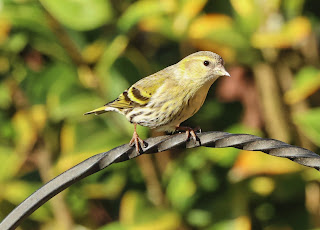Siskin: Birders are most likely to encounter these agile little birds in coniferous forests and plantations but, particularly in winter they can be attracted to garden feeders.
Dawn and I purchased a new house over the Christmas period and although this brings untold stress with packing, moving driving the morals van and then settling in. A new home brings the excitement of a new garden bird list and new visitors to my garden feeders.
We lived in our old house in Abram for over seven years and I only recorded siskin twice on the feeders. When we moved into our new house we had an awful problem with the resident squirrels, they were relentless in sniffing out the feeders, damaging them and emptying the seed. So, I decided to upgrade the feeders from to the fantastic Roamwild Pest Off Bird Feeder. These 100% squirrel proof feeders have a spring loaded perches that drop when anything heavier than a small bird lands on them, pulling down a door that closes the feeding holes along with large squirrel baffle on the top and above the feeding holes.
They are great, I've had no more issues with squirrels and plenty of garden birds enjoying the free buffet.
https://roamwildproducts.co.uk/products/roamwild-squirrel-proof-bird-feeders



















